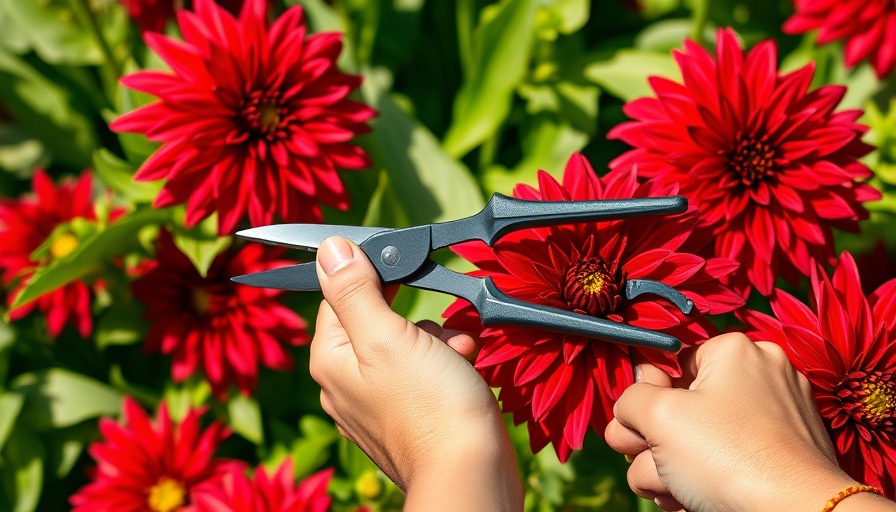
The Art of Pruning Dahlias for Flourishing Blooms
Dahlias are the unsung heroes of late summer gardens, producing spectacular displays of color that can last well into the fall. Known for their intricate petal formations and vibrant hues, these flowers are not just beautiful; they also require care and attention to flourish. Proper pruning techniques can significantly increase the number of blooms, ensuring a lengthy display that enriches your garden.
Understanding Dahlia Growth
Dahlias are grown from tubers, sprouting with impressive vigor. These plants are relatively hardy and thrive in USDA zones 7-10, but they do need special care during winter. Pruning plays a critical role in managing their energy and can lead to either smaller, numerous flowers or larger, singular blooms. The key is understanding your goals as a gardener. Whether you aim to fill your yard with an array of colors or center your efforts on giant, show-worthy flowers, the approach to pruning will vary.
Essential Pruning Techniques
When it comes to pruning dahlias, three main techniques can help achieve the desired results:
- Pinching/Topping: This method encourages bushier growth by removing the top part of the stem. This promotes lateral branching and enhances flower production.
- Disbudding: Removing side buds lets the plant invest its energy into producing one larger bloom instead of several smaller ones. This technique is particularly useful for cut flowers.
- Deadheading: Consistently removing wilted flowers redirects the plant's energy toward creating new blooms, extending the flowering period significantly.
Why Pruning Matters
In gardening, fostering good habits in plant care is crucial. For dahlias, regular pruning not only enhances appearance but improves plant health. Faded flowers can sap the energy and nutrients vital for blooming. Furthermore, pruning helps to control plant size, encouraging compact growth that makes the garden easier to manage.
Timing Your Pruning for Maximum Effect
Knowing when to prune is just as important as knowing how. The best time to perform pruning tasks is in the morning, when the plants are most hydrated and resilient. This timing allows for cleaner cuts and helps the plant recover more quickly.
Pest Control and Plant Health
While pruning can significantly enhance flowering, keeping an eye out for pests is equally important. Aphids and spider mites can become a nuisance if not monitored. Regular inspections, paired with pruning, can create a healthier growing environment, allowing dahlias to thrive.
Enhancing Your Garden for Long-Term Success
The beauty of dahlias lies not only in their blooms but also in their resilience. Incorporating smart practices like pruning, proper watering, and pest control can lead to a vibrant garden that attracts pollinators and lifts your outdoor space. Consider adding features such as raised beds or elevated planter boxes if you want to optimize growth and improve drainage.
For homeowners in Muskegon, starting your backyard planting box or building elevated planters can greatly improve your gardening success. Explore local resources to learn more about creating the perfect environment for your dahlias.
Conclusion: Take Action in Your Garden
With the right techniques and commitment, anyone can enjoy the stunning rewards of pruned dahlias. Start implementing these practices in your garden today! And for a seamless experience, contact Norther-LawnCare.com, your local expert in lawn care and property management.
 Add Row
Add Row 
 Add
Add 


Write A Comment